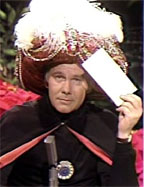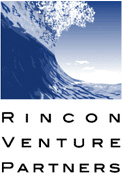 It is your chance to break into the “big time” All of your hard work and preparation comes down to a brief performance, the outcome of which could be life-changing.
It is your chance to break into the “big time” All of your hard work and preparation comes down to a brief performance, the outcome of which could be life-changing.
This was the situation faced by the hundreds of comedians who debuted on “The Tonight Show” during Johnny Carson’s 30-year tenure. If they succeeded, Johnny shook their hand at the end of their routine and offered them a seat in his guest chair. This small gesture indicated that he approved of their act and would invite them back for a future performance.
The careers of nearly every successful comedian during the 1970s and 1980s, including George Carlin, Flip Wilson, Freddie Prinze, Sr., Joan Rivers, Roseanne Barr, Ellen DeGeneres, Jerry Seinfeld, Robin Williams, Jay Leno and David Letterman, were launched by a brief monologue on “The Tonight Show.”
If you haven't already subscribed yet, subscribe now for
free weekly Infochachkie articles!
Entrepreneurs’ careers seldom come down to a single make-or-break moment, such as a debut before a national television audience. However, entrepreneurs often give presentations which, if properly executed, can be life-changing. Such presentations might be to a potential lead investor, an initial key customer or a group of opinion leaders at an industry tradeshow. Irrespective of the audience or venue, many of the tactics utilized by comedians to hone their routines and make the most of their “big break” are applicable to entrepreneurial presentations.
A presentation’s objective can be thought of as the entrepreneur’s Ask, what they want to achieve as a result of the presentation. The Tonight Show comedians’ objective was to be well-received by Johnny, so they would be invited back to a future show. For business entrepreneurs, the “Ask” often involves a request for an investment, a partnership or a purchase order.
The worlds of comedy and business are not as disparate as they may appear at first glance. Comedians are entrepreneurs. They often write their material, book their gigs, arrange their travel and negotiate their compensation with each club owner. In addition, comedians must engage and entertain their demanding audiences within a strict time period. Business entrepreneurs are similarly challenged to present their ideas in an engaging, informative and pithy manner. As such, there is much that business entrepreneurs can learn from their comic brethren.
Established comedians, just like successful, serial business entrepreneurs, can rely upon their reputations and past successes and do not have to “nail” every performance. Conversely, up-and-coming comedians and unproven entrepreneurs must win their audience over each time they present. They cannot rely upon their past successes to predispose their audiences to be convivial to their message.
The characteristics of a successful comedy routine, which are also applicable to business presentations, are described in detail in the remainder of this article. They include:
- Strong Start – Grab your audience’s attention at the outset
- Punch Line – Quickly tell the audience who you are and why it is important for them to listen to you
- Heckler Management – Do not alienate your spectators by too quickly shutting down troublesome audience members
- Rehearsed Spontaneity – Practice thoroughly such that all of your remarks seem fresh and spontaneous
- Audience Interaction – Control your audience repartee, especially questions and answers
- Segues – Make it easy for your audience to follow you, especially when transitioning between topics
- Humor – Utilize tactful humor, relevant to the topic at hand
- Fini – Close with impact and clearly communicate your call-to-action Ask
Comedic Tips
Strong Start – Due to their limited stage time, comedians must quickly set the tone of their act. Often the success or failure of the opening joke determines how well the routine will be received. As noted in How To Give A Horrendous Investor Pitch, approximately 55% of a speaker’s communication during the first few minutes of a presentation is nonverbal, while an additional 38% is tone of voice. A mere 7% of a speaker’s initial communications comprise the words they utter. At the outset, it is not what you say, but how you say it that has the greatest impact.
Consider the way many comedians open their show. They frequently bound onto the stage with tremendous energy and drive. They often smile broadly, laugh and nod their head up and down in an affirmative manner as they tell the audience, “It is great to be here.” Business presenters should also quickly engage their audience and make it clear that their presentation will be lively, informative and entertaining. If you lose your audience in the first few minutes by exhibiting low energy, it is often impossible to recapture their attention.
When appropriate, open with an anecdote or personal story that makes the audience care. A good opening establishes empathy and a positive rapport with your audience. A good opening describes who you are and why the audience should share your passion for the topic at hand. Once you have established who and why, then tell your audience how you will fulfill your vision.
 An example of a compelling opening comes from Alison Perry, one of the Co-Founders of Inogen. Alison passionately describes the genesis of Inogen’s mobile oxygen concentrator. After spending Christmas break with her grandmother, who had recently been housebound by chronic obstructive pulmonary disease, Alison returned to college determined to find a solution to her grandmother’s immobility. Alison describes how she did not give up, even after she spoke to numerous industry experts who told her it was impossible to build an oxygen concentrator smaller than the size of a college dorm refrigerator. Like the entrepreneurs described in Reinventing The Wheel, Alison and her Co-Founders ignored Conventional Wisdom and created the world’s first portable oxygen concentrator.
An example of a compelling opening comes from Alison Perry, one of the Co-Founders of Inogen. Alison passionately describes the genesis of Inogen’s mobile oxygen concentrator. After spending Christmas break with her grandmother, who had recently been housebound by chronic obstructive pulmonary disease, Alison returned to college determined to find a solution to her grandmother’s immobility. Alison describes how she did not give up, even after she spoke to numerous industry experts who told her it was impossible to build an oxygen concentrator smaller than the size of a college dorm refrigerator. Like the entrepreneurs described in Reinventing The Wheel, Alison and her Co-Founders ignored Conventional Wisdom and created the world’s first portable oxygen concentrator.
Punch Line – Comedians often have extremely short time windows in which to perform; a five to eight minute comedy set is not uncommon. This forces comics to quickly deliver their punch lines while remaining cognizant of the time remaining in their set. In many instances, if they exceed their allotted time, the house MC will cut them off and their chances of a repeat performance at the club are diminished.
Entrepreneurs should also be mindful of their stage time. If the audience is relatively small, confirm your allotted time at the outset of your talk, even if you think you know the time afforded you. By asking, “I know we scheduled thirty minutes, does that still work for you?” you communicate deference and respect. If the audience is large, confirm your stage time with the appropriate show organizer before taking the stage.
As the end of your prescribed time approaches, ask if you should wrap up your presentation even if things are going well. In many cases, if your presentation is well-received and the audience is relatively small, you will be given more time. However, never assume that your stage time has been expanded without explicit confirmation. If you continue your presentation without acknowledging that you have exceeded the agreed-upon time allotment, you run the risk of alienating your audience.
Heckler Management– An audience has a group identity, even when they do not know each other or have any affiliation. They relate to you as the presenter and they relate to each other as the collective audience, which effectively creates an “us versus them” paradigm.
Experienced comedians understand this dynamic. If a comedian immediately shuts down a heckler, she risks estranging the crowd. Even when a heckler is rude, the crowd will naturally “side” with a heckler if they feel the comedian’s response is disproportionate or premature. Instead, veteran comedians endure a heckler’s interruptions until it is clear that the audience is also annoyed. Once a heckler begins to detract from the show, the comedian can shut them down while retaining the audience’s empathy.
The success or failure of business presentations often rests upon the questions and answers following the formal pitch. An audience member who asks an irrelevant or nonsensical question is analogous to a heckler at a comedy show. The presenter must initially respond respectfully. If the questioner continues to ask off-base or overly pointed questions, the audience will eventually become agitated. Once their impatience is evident, the speaker can then politely dismiss the questioner by indicating they will take additional questions “off-line,” after the presentation has concluded.
Rehearsed Spontaneity – The documentary “The Comedian” chronicles Jerry Seinfeld’s effort to create a new comedy routine. It makes clear that nearly all new material bombs. Comedy requires extensive trial and error to separate the bad bits from those that work. The same is true with business presentations.
The next time you go to a comedy club, watch the waitstaff. In most cases, they stoically move about the room, even when the audience is laughing uproariously. Why? Because they have heard the jokes over and over, in the same order and delivered in the same “spontaneous” way. In the rare instances when the waitstaff does laugh at a comic, it usually indicates that the comedian is new to the club. Great comedy appears effortless, yet is actually the result of painstaking practice.
It is very hard to tell a joke over and over and make it sound like you just thought of it. However, a joke that sounds like it has been told repeatedly is usually not funny. Making a well-rehearsed business presentation sound fresh is similarly difficult. When Computer Motion went public, we conducted a three-week road show in which the executive team gave the same presentation day after day, often multiple times per day. Our most effective presentations were those in which our well-rehearsed “adlibbing” actually sounded somewhat spontaneous. If you prepare thoroughly, you can achieve the same rehearsed spontaneity that distinguishes professional comics from amateurs.
Audience Interaction – Comedians often ask their audience questions and make comments about people’s wardrobes, dates, drinks, etc. If you pay close attention, you will notice that these comments are often not directed to anyone in particular. However, the audience assumes that the guy drinking the “girlie drink” in the back of the room really exists. In most cases, the comedian makes the same audience jokes at each show and directs many of his audience comments to no one in particular.
Business entrepreneurs clearly are not well-served by chiding or mocking their audience. However, the act of soliciting their participation, especially in an intimate setting, can effectively keep the audience engaged. If the crowd’s size is intimate, you should engage the group by using their first names and asking them relevant questions that will solicit responses congruent with your ask. Like a good trial lawyer, avoid asking questions to which you do not know the answer. Otherwise, you may inadvertently elicit responses that are in conflict with your Ask.
Comedians often ask questions as a platform for delivering their punch lines. In business presentations, your responses to questions should convey a message that supports your ultimate Ask. An example of how to inject your message into the answer to an amorphous, ill-conceived question occurred during the first Presidential debate in 1992. President Bush was asked a nonsensical question about the economy by a confused (and likely very nervous) woman. Although there was no real answer to her non-question, Mr. Bush attempted to explain how he planned to stimulate the economy, using technical jargon that the questioner did not appear to understand.
Candidate Clinton then stepped forward and said to the woman, “Tell me how it has affected you again?” The questioner still could not put together a coherent sentence, but this did not deter Mr. Clinton. He answered his own question by saying, “You know people who have lost their jobs and lost their homes?” He then went on to deliver his infamous “I feel your pain” response, which was clearly a well-rehearsed talking point. He conveniently used the poorly structured non-question as a platform to deliver his Ask, which was “vote for me, I am in touch with the average American’s financial plight.”
Segues – Proper pacing is of vital importance in a comedy routine. Comedians must allow adequate time for the audience to comprehend each joke and react. At the same time, an imbalance of too many pauses or too many laughs is also ineffective.
One way to ensure effective pacing is to establish segues that alert the audience that you are moving from one subject to another. In comedy, empty phrases such as, “Anyone here from New York?”, “Did you guys hear about the _________?”, “Has this ever happened to you? I was recently _____,” are often used to mark transitions between humorous topics. Such verbal landmarks give the audience a chance to catch their breath while guiding them on to the next subject to be discussed.
Entrepreneurs should afford their audiences similar mental respites. Your audience will more readily focus on your message if you give them ample time to digest your remarks while clarifying when your talk’s path is changing direction via clear transitions.
Humor– Contrary to popular belief, business presentations do not have to be boring. Interjecting humor into business presentations, when done judiciously, can make them more entertaining and thus more impactful. Entertained people are more engaged. Engaged people are more receptive to an Ask. In one company-wide presentation, I explained our aggressive marketing campaign to promote GoToMyPC, by morphing Dr. Seuss’s character Sam-I-Am into “Spam-I-Am.”
My talk was delivered in a humorous manner, which reduced the tension surrounding a contentious issue and helped me belie our employees’ concerns regarding our marketing tactics. My Ask was for our employees to appreciate the revenue contribution generated by GoToMyPC and for them to be patient as we explored various emerging marketing tactics, some of which were controversial, such as pop-up and pop-under ads.
Fini – Comedians often deploy the bookend technique, in which they reference their opening joke at the conclusion of their show. This gives their performance a feeling of completion and symmetry. Entrepreneurs can utilize this approach as well, by referring to their opening anecdote in their closing remarks. In Alison’s case, she could cite her grandmother as an example of the market segment that will benefit when her Ask is fulfilled. They key is to ensure that your presentation end on a high note.
Three-Drink Minimum
Let’s face it. Comedians have some significant advantages that are not available to most business entrepreneurs, including the three-drink minimum. I am confident I could have significantly boosted sales revenue at my past ventures if I could have required each prospective customer to down several stiff adult beverages during my presentation. It is admittedly easier to entertain a crowd of semi-drunk people than to engage and inform a group of jaded, semi-interested business prospects. However, if you treat each presentation like it is your “big break” and prepare in the way a professional comedian would, you will greatly increase your odds of reaching the equivalent of Johnny’s guest chair and achieve your Ask, while potentially turning your presentation into a life-changing event.
As you never know who might be in the audience and how they might be able to help your adVenture, you should put forth a 100% effort with each presentation. However, all is not lost if you are unable to connect with a particular audience. Even Johnny Carson was not always right.
For instance, in 1981, a young comedian made his first television appearance on the Tonight Show. Johnny, clearly not impressed with the comic’s resume, introduced him as someone who “has worked a lot of small clubs, both in New York and Los Angeles.” Not exactly a ringing endorsement.
After struggling through a mediocre five-minute routine, marred by microphone problems and a lukewarm audience reception, the comedian awkwardly waited for Johnny’s reaction. Johnny gave him the OK sign with his left hand and told him, “Take a bow,” which meant “get off the stage.”
That comedian was Jerry Seinfeld.
— Get hands-on advice from your John Greathouse, Subscribe Today. —
Copyright © 2007-9 by J. Meredith Publishing. All rights reserved.




